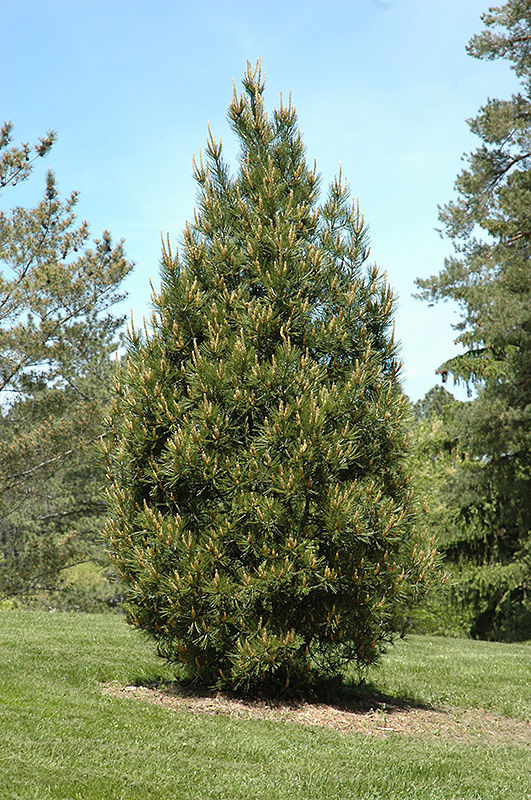Rowe Arboretum Lacebark Pine
Pinus bungeana 'Rowe Arboretum'
Height: 30 feet
Spread: 20 feet
Sunlight:
![]()
![]()
Hardiness Zone: 4b
Description:
A beautiful evergreen tree which exfoliates to reveal brown, rust, green, and cream bark with age, however, lower branches must be removed for maximum effect; habit is upright but opens up with age, becoming a character tree, adapts to growing conditions
Ornamental Features
Rowe Arboretum Lacebark Pine is primarily valued in the landscape for its decidedly oval form. It has rich green evergreen foliage. The needles remain green throughout the winter. The mottled creamy white bark is extremely showy and adds significant winter interest.
Landscape Attributes
Rowe Arboretum Lacebark Pine is a multi-stemmed evergreen tree with a shapely oval form. Its average texture blends into the landscape, but can be balanced by one or two finer or coarser trees or shrubs for an effective composition.
This is a relatively low maintenance tree. When pruning is necessary, it is recommended to only trim back the new growth of the current season, other than to remove any dieback. It has no significant negative characteristics.
Rowe Arboretum Lacebark Pine is recommended for the following landscape applications;
- Accent
- Shade
Planting & Growing
Rowe Arboretum Lacebark Pine will grow to be about 30 feet tall at maturity, with a spread of 20 feet. It has a low canopy with a typical clearance of 5 feet from the ground, and should not be planted underneath power lines. It grows at a medium rate, and under ideal conditions can be expected to live for 70 years or more.
This tree does best in full sun to partial shade. It prefers dry to average moisture levels with very well-drained soil, and will often die in standing water. It is not particular as to soil type or pH. It is somewhat tolerant of urban pollution. This is a selected variety of a species not originally from North America.







